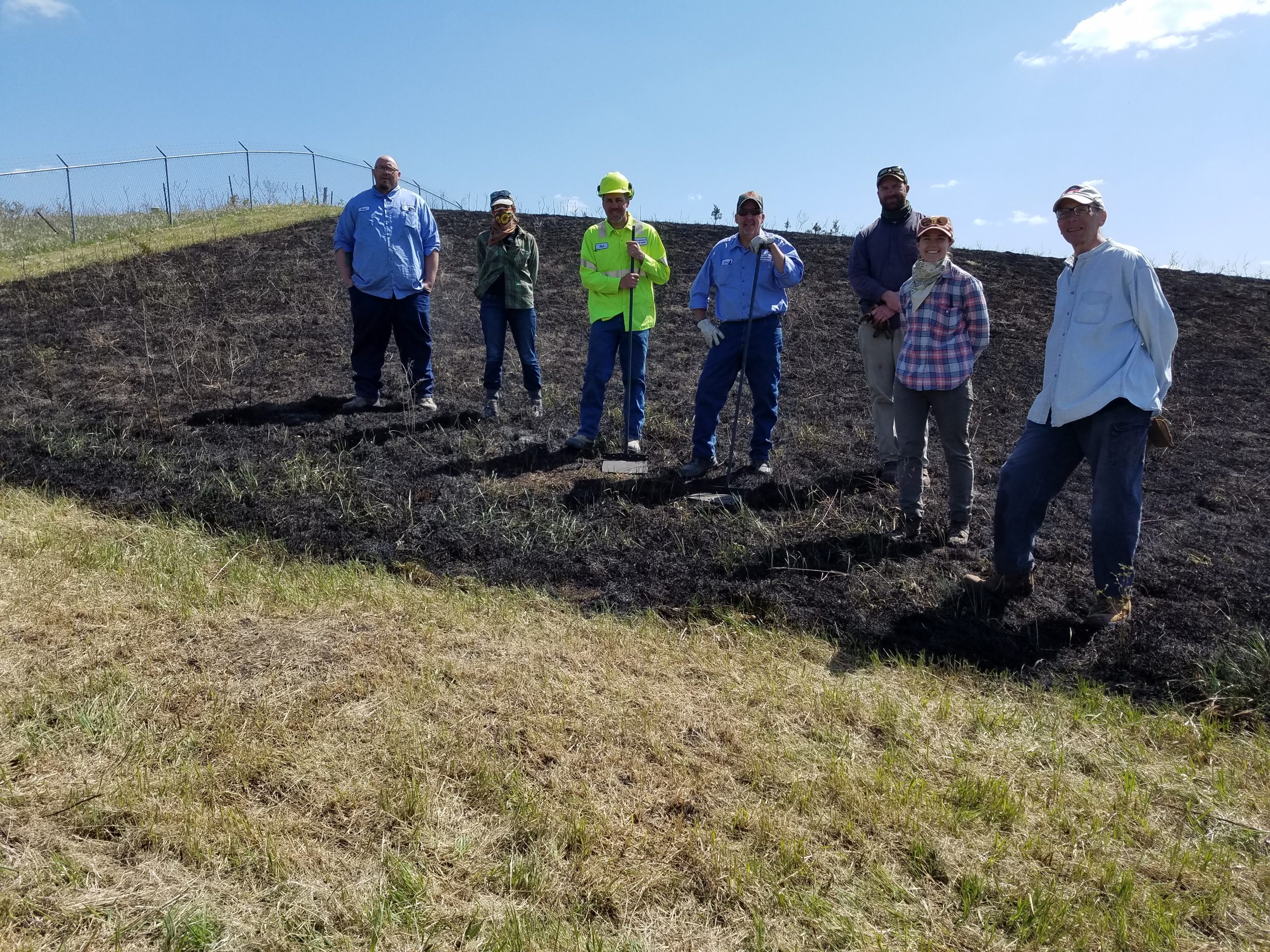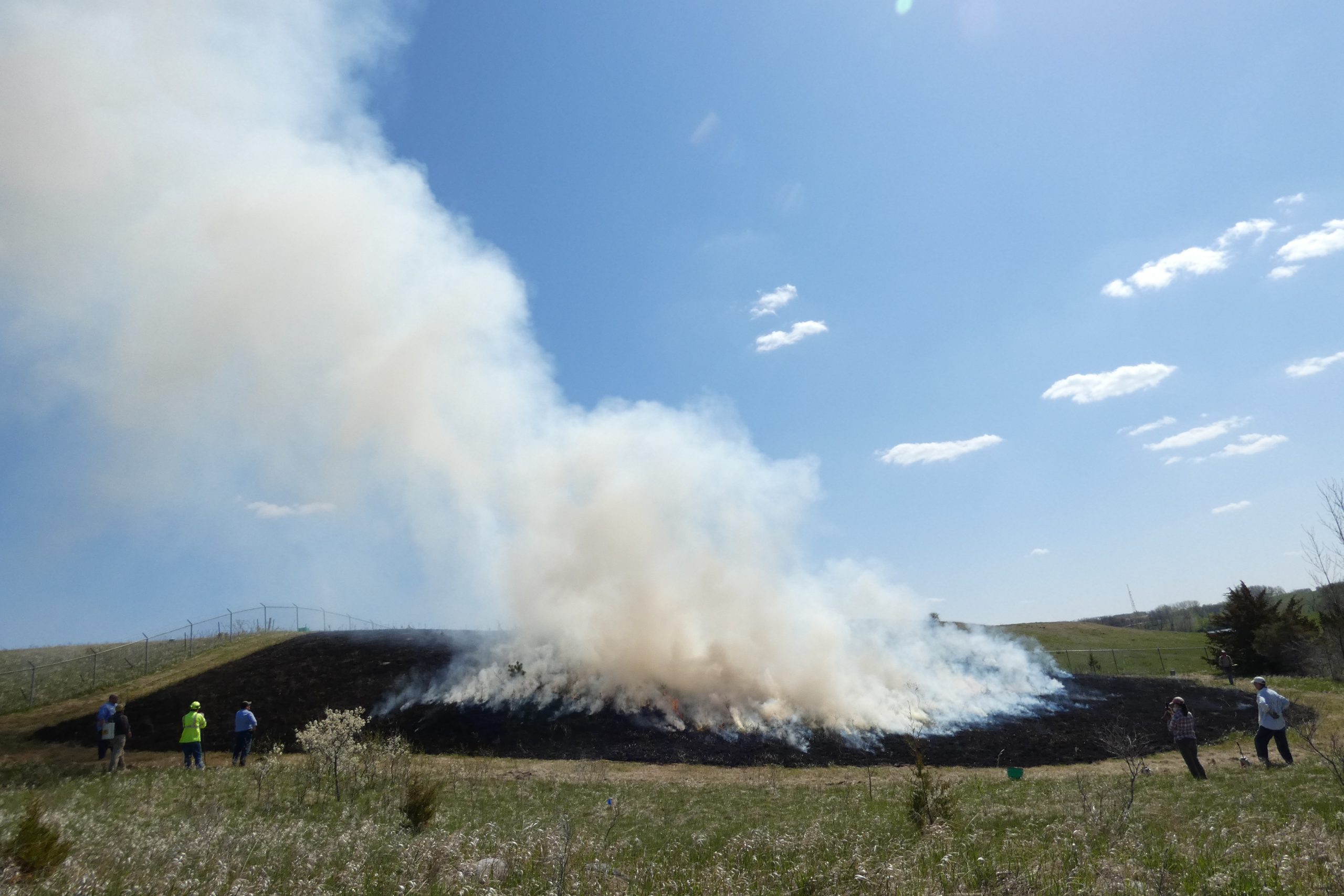Whew, the past month has been a blur. When I hopped in a car on April 21, we had not gotten a start on our ambitious burn plans. We hadn’t even stepped foot in Minnesota since the fall. Fast forward three weeks and we had completed 10 prescribed burns including 2 experimental plots and 8 remnants (listed below). These included nine burns in a rather intense period of nine days (May 4 to May 12)!
Experimental plots: p8 & p10
Remnants: eri (north), yoh (east), yoh (west), kjs, lc (east), sap, lf (east), & dog
Huge thanks to all the volunteers who came out to help with prescribed burns this spring! We could not have completed such as safe and successful 2021 burn season without you. And thank you to all the landowners who gave us permission to conduct prescribed burns. We are grateful to have such wonderful, supportive neighbors and we look forward to continuing to work with you!
Prescribed burns are an important part of our research. Fire is the most effective and efficient way to maintain our experimental plots. Without periodic fire, they would be quickly overrun by shrubs and trees. We are also eager to investigate how fire affects prairie plant reproduction and population growth. Burning is a necessary first step for these projects! But a fringe benefit that excites me is returning fire to the landscape starved for fire. Contrary to popular belief, I am not a pyromaniac. I am mesmerized by the sight of flames dancing across the ground, the distinctive pops and crackles given off my warm season grasses engulfed in flames, the warmth emanating from the fiery spectacle, and the lingering smell of smoke but this isn’t why I burn. I burn because fire is as much a part of prairie as rain, sunlight, soil, and wind.
Before the early 1900s, fire was ubiquitous. Lightning strikes generate an immense amount of energy and heat which undoubted ignited fires in dry prairie grasses that raced across the contiguous expanse of North American prairie. Moreover, for millennia Native Americans adeptly used fire to manage the landscape. Fire was used to reduce fuel loads and the risk of catastrophic wildfire, improve forage to game animals, clear land for crops, and undoubtedly many other reasons. Estimates of fire frequency in tallgrass prairie pre-1850 suggest any given location burned every 1-5 years. Even after Euro-American settlement, fire was common. Landowners often burned ditches to prevent woody plants from establishing and burned pasture to improve forage for livestock. Bottom line: in the post-glacial history of western Minnesota, the widespread absence of fire for the past 70+ years is abnormal.
Prairies need fire. Without fire, we risk losing the incredible diversity of prairie plants sheltering in remnants scattered across the landscape. We risk losing the diverse pollinators and insect herbivores that depend on those prairie plants. as well as their predators (other insects and arthropods, birds, reptiles, small mammals, etc.) and so on. We risk losing Minnesota’s rich prairie heritage. The challenge is safely returning fire to the landscape, understanding the differences and tradeoffs of burning small prairie remnants rather than large expanses of prairie, and making recommendations about burning based on sound science. Sounds like a job for Team Echinacea 2021!





Leave a Reply